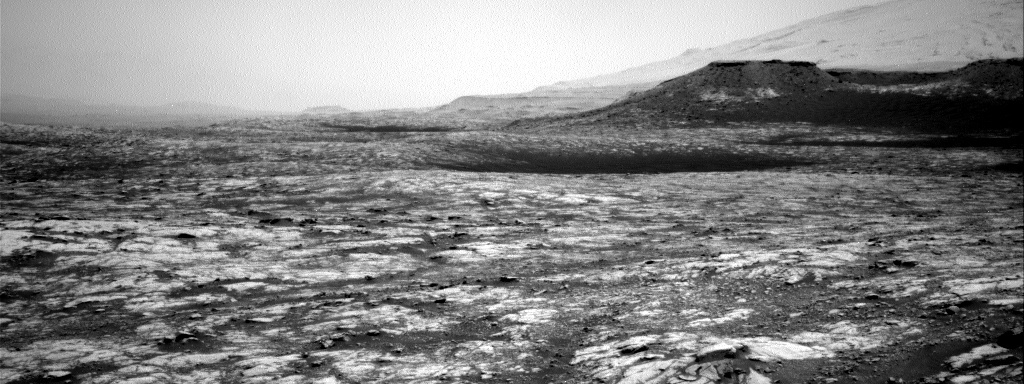2 min read

This week the science team decided not to drill a second hole next to the "Glasgow" target, and so we’re able to hit the road again this weekend. We’re heading east, past a large sand sheet, and toward the sulfate unit farther up the slopes of Mt. Sharp that Curiosity will be exploring in the future. The sulfate unit is the last unexplored region that originally led to Gale Crater’s selection as the landing site for Curiosity.
Before driving this Sunday, Curiosity is wrapping up activities at Glasgow with a very full science plan and the opportunity to complete several activities that are rather infrequent. A series of observations with Mastcam and Navcam will monitor sand and dust motion on the surface. We call these “change detection” images and they help inform us about how Mars’ many sand dunes form and move and how the surface has been eroded over billions of years of history. APXS will monitor the atmosphere. Usually, APXS is placed down on the surface for contact science on a rock target, but the instrument is also sensitive to argon, a trace gas in both Earth’s and Mars’ atmospheres. Because of Mars’ climate, where a large amount of the atmosphere freezes onto the polar caps in winter, the relative amount of argon in the atmosphere changes, and APXS can monitor that cycle. Lastly, we planned a ChemCam observation (a “passive sky”) where we use ChemCam, without the laser, to look at the atmosphere and monitor how gases like water vapor and dust amounts change seasonally. We’re in the early portion of the dusty season on Mars, so we’re keeping a close eye on the sky to watch for storms.
Written by Scott Guzewich, Atmospheric Scientist at NASA's Goddard Space Flight Center







